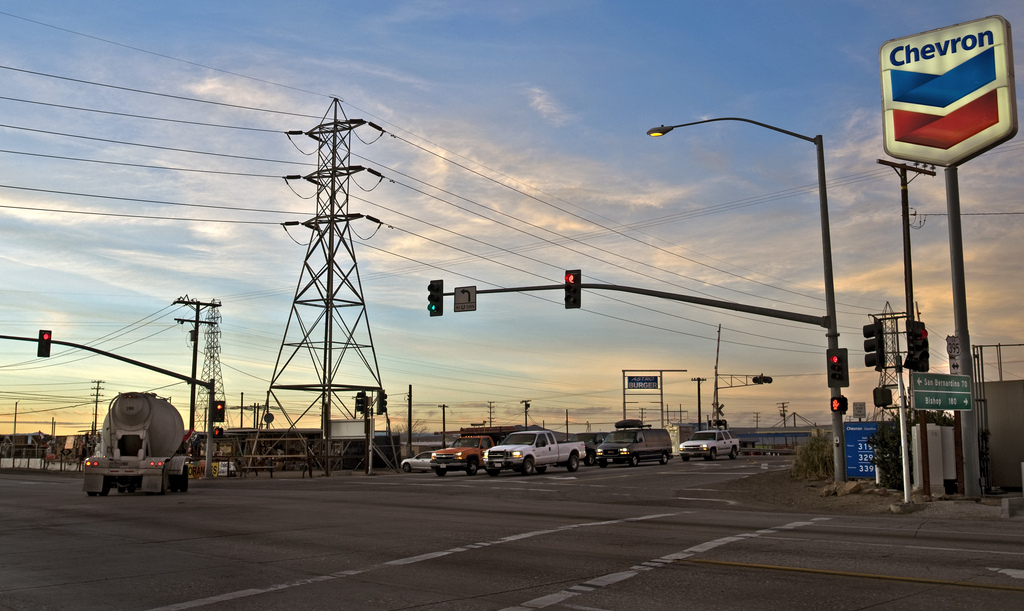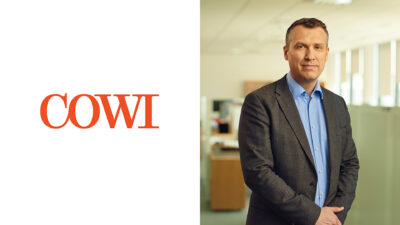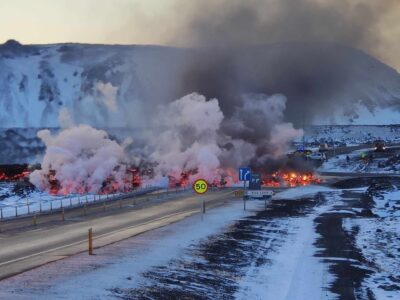GEA promoting geothermal energy’s grid reliability and system resilience services
In a comment sent to the U.S. Department of Energy, the Geothermal Energy Association is promoting geothermal's capability to provide grid reliability and system resilience services under improved market designs.
The Geothermal Energy Association has released a statement on new proposed Grid Resilience Pricing Rules by the U.S. Department of Energy ’(Docket No. RM18-1-000)
Here the official comments by GEA:
We are writing on behalf of the members of the Geothermal Energy Association (“GEA”), which counts over 100 companies in the American geothermal power industry that supports a direct workforce of almost 12,000 highly paid, full-time jobs in the United States.
The United States leads the world in geothermal power generation. Geothermal energy is a vast energy resource that has tremendous growth potential and is the only renewable energy source that can provide dependable, base-load power. Geothermal power production has expanded in recent years to eight Western states, and will become viable in more states as research and development progresses.
Geothermal is not currently deployed in markets within the scope of the Department of Energy’s (“DOE”) proposed rule. GEA is submitting comments in this docket given the potential geothermal resource in some areas of the regions affected by the DOE proposed rule and given the potential for this rule to influence other competitive wholesale markets where geothermal is an active market participant (i.e., CAISO).
I. Summary
Geothermal is a renewable technology that can run as a base-load resource while also providing a range of flexible services to the grid. Geothermal provides numerous ancillary services and grid benefits such as power regulation, load following or energy imbalance, spinning reserve, non-spinning reserve, storage, and replacement or supplemental reserve.
It also offers operational flexibility which assists with integrating intermittent resources, such as wind and solar, to the grid. Geothermal is the kind of resource the DOE proposed rule seeks to help. While coal and nuclear plants may have months to a few years of fuel onsite, geothermal plants arguably have hundreds of years of fuel onsite in the form of subterranean geothermal fluids and heat. While fuel security is one important aspect of a potential definition for resilience, it is on its own insufficient to properly incentivize the key services needed for a truly resilient grid. For that reason, the Commission should not finalize the DOE proposed rule as written.
Instead of finalizing the rule, the Commission should convene regional technical conferences to collect input on defining resilience, identify services that promote grid reliability and system resilience, evaluate the relative importance of each of these services, and design markets (or give ISO/RTOs chances to design markets) that efficiently compensate for those services. GEA supports policies that foster the growth of a diverse national energy portfolio and recognize that all energy technologies bring unique attributes to the system. Future grids will require a mix of all the available renewable resources to meet power supply needs.
II. Defining the Problem
Like coal-fired and nuclear generators in the eastern United States, geothermal operators in the Western United States face challenging economics during this period of electric system transformation. Due to flat load growth and low market prices for natural gas, solar and wind, and a history of federal and state support that has favoured these technologies, geothermal is struggling to compete.(1)
Geothermal is a multipurpose non-emitting resource capable of providing all of the services generally recognized as crucial for maintaining electric grid reliability, as well as operational flexibility. The GEA believes that full recognition of geothermal’s benefits for grid reliability and system resiliency will improve geothermal economics. Our technologies provide numerous ancillary services and grid benefits such as power regulation, load following or energy imbalance, spinning reserve, non-spinning reserve, storage, and replacement or supplemental reserve.
However, geothermal plants are generally uncompensated for these services under current market rules. The problem is not the lack of value placed on onsite fuel supplies, but rather the lack of market structures that efficiently procure and compensate for fuel diversity, greenhouse gas reductions, and resilience services.
(1) On a per MWh basis, geothermal is generally not price competitive with variable renewable resources or natural gas-fired plants. See 2017 Sustainable Energy in America Factbook, Bloomberg New Energy Finance, http://www.bcse.org/sustainableenergyfactbook/.
III. Geothermal’s Qualification as a Fuel-Secure Resource
The GEA notes that the DOE’s proposed rule does not offer a definition for resilience beyond describing the plant attributes it considers adding to system resilience. Based on the five characteristics provided for an “eligible grid reliability and resiliency resource,” GEA expects many geothermal power plants would qualify if CAISO and other regions in the Western United States were subject to the proposed rule. Because geothermal plants rely on in place renewable resources, they have a much greater than “90-day fuel supply on site enabling it to operate during an emergency, extreme weather conditions, or a natural or man-made disaster.”(2)
It is important to note, however, that though geothermal (or other) plants may have fuel on site, that condition is necessary but not sufficient for the plant to run. These projects require a system of delivery to transmit the power produced, such as lubricants, personnel, coolants (in some cases), and other elements necessary to convert the fuel available into usable power. We note that the same is true for coal and nuclear – the mere presence of fuel onsite does not represent all the necessary conditions for the facilities to continue to run safely.
Increasingly, geothermal plants are able to operate as flexible resources that provide the range of “essential energy and ancillary reliability services” identified by the DOE’s proposed rule. (3) Flexible geothermal operations have been demonstrated by several projects, including the 38 MW Puna Geothermal Venture plant on the Big Island of Hawaii. (4)
This plant provides ancillary services for grid support which are essentially identical to those of the existing oil-fired peak generating resources on the Big Island. This plant is considered a first-of-its-kind and could be expanded to other facilities given the right contracts and retrofits.(5)
Additionally, geothermal plants at the world’s largest geothermal field—The Geysers, located in northern California—have operated in various modes, including traditional base-load, peaking and load-following. The flexible modes were offered as an appropriate response to the needs of one of the utilities purchasing geothermal power from The Geysers. Flexible operations ceased in the early 1990s in response to a combination of low demand and lower costs of generation within the utility’s system from hydro, coal, and natural gas power plants. (6)
The technology to provide ancillary services is available for most operating geothermal power plant facilities today, and likely for all new power plant facilities. However, usually there are economic reasons working against these options. Simply put, the reason geothermal power does not currently operate flexibly is that current contracts with geothermal operators did not request or address these ancillary services. Utility companies or balancing authorities who wish to contract for flexible geothermal resources can now do so with confidence, and should be prepared to structure solicitations and offer contract pricing accordingly.
(2) Proposed “Grid Resiliency Pricing Rule” (Sept. 28, 2017), p.18; U.S. Department of Energy; https://elibrary.ferc.gov/idmws/common/OpenNat.asp?fileID=14702821
(3) Id.
(4) “Puna Geothermal Venture (PGV)”; Hawaiian Electric; https://www.hawaiianelectric.com/clean-energyhawaii/clean-energy-facts/renewable-energy-sources/geothermal/puna-geothermal-venture-(pgv)
(5) Nordquist, J., Tom Buchanan, and Michael Kaleikini. “Automatic Generation Control and Ancillary Services” GRC Transactions, Vol. 37, 2013.
(6) Cooley, D. A report on cycling operations at the Geysers Power Plant. No. CONF-960913–. Geothermal Resources Council, Davis, CA (United States), 1996.
IV. Conclusion
A blanket rule rewarding power plants for having onsite fuel steps over the underlying problem and, in doing so, may create new problems and skewed markets. We agree that the time is right for a national conversation about how to ensure a reliable and resilient electricity grid, and we look forward to engaging with DOE and FERC to ensure the grid-related attributes of geothermal are well understood and accommodated in federal policymaking.
The GEA asks FERC to not move forward with this proposed rule and instead focus on identifying services that promote grid reliability and system resilience, and design markets (or give ISO/RTOs chances to design markets) that efficiently procure and compensate for those services. Instead of finalizing the rule, FERC should convene regional technical conferences to explore technologies and resources that are or that could provide grid reliability and system resilience services under improved market designs.
Source: Official release by the U.S. Geothermal Energy Association


















